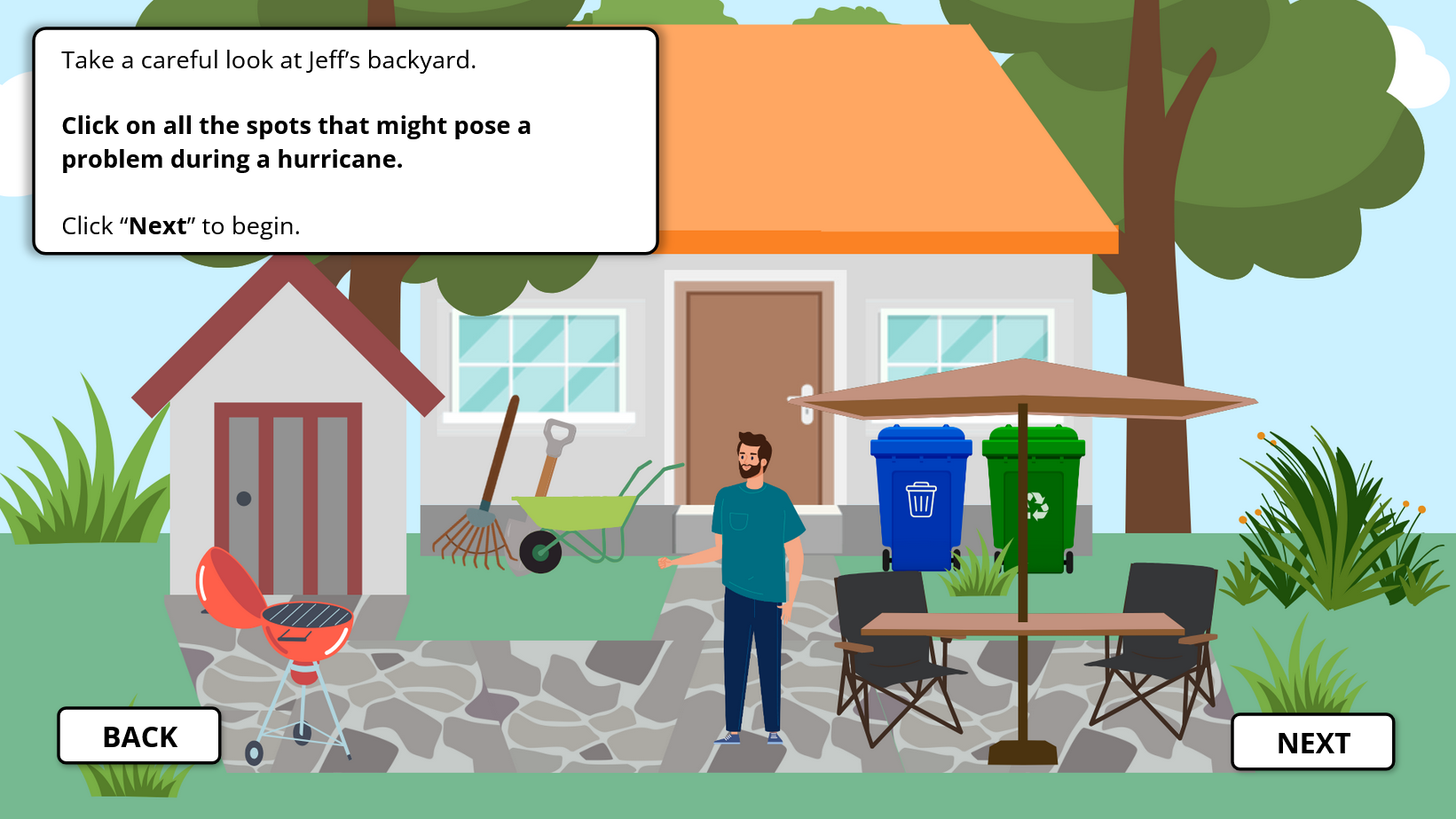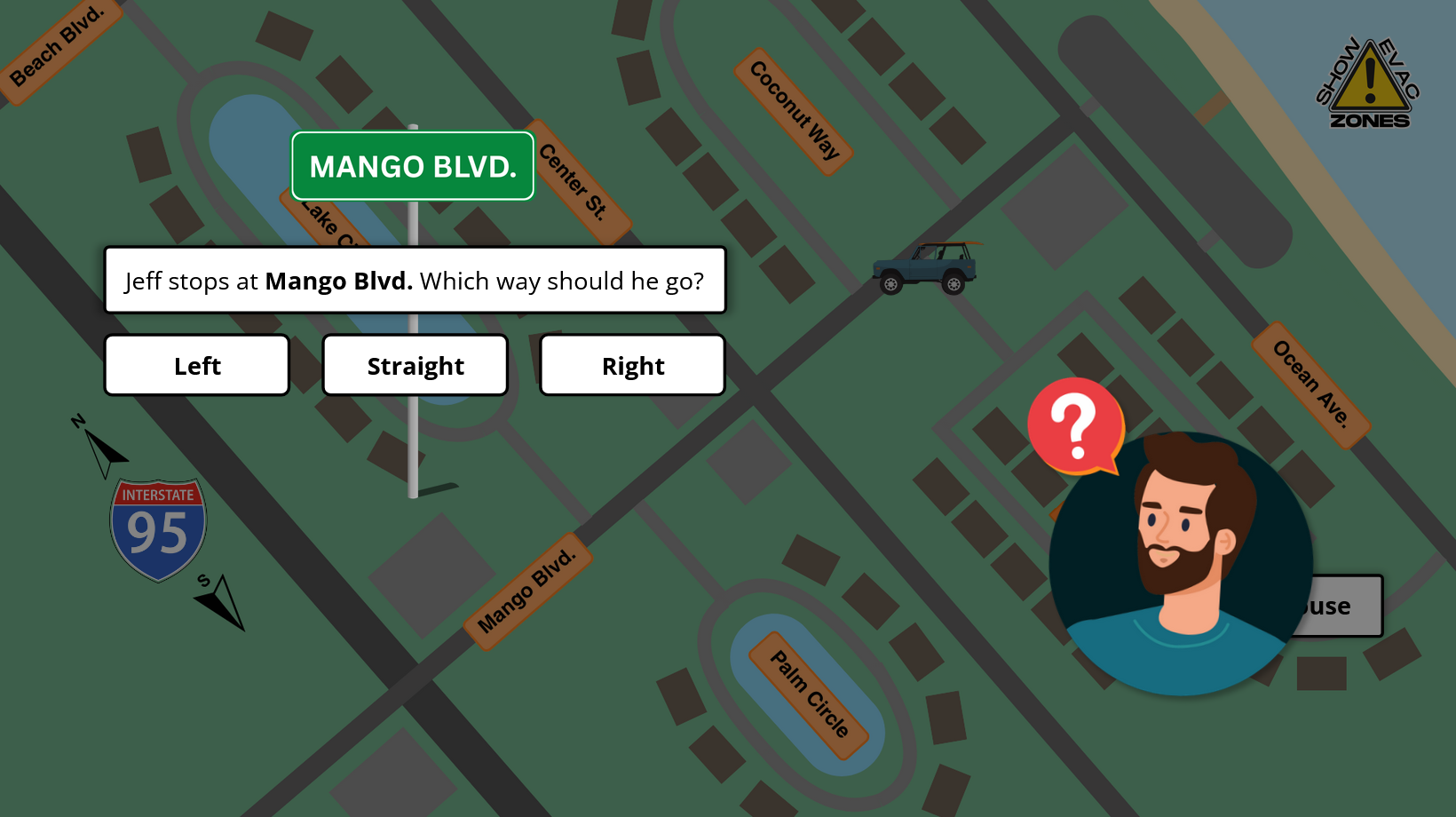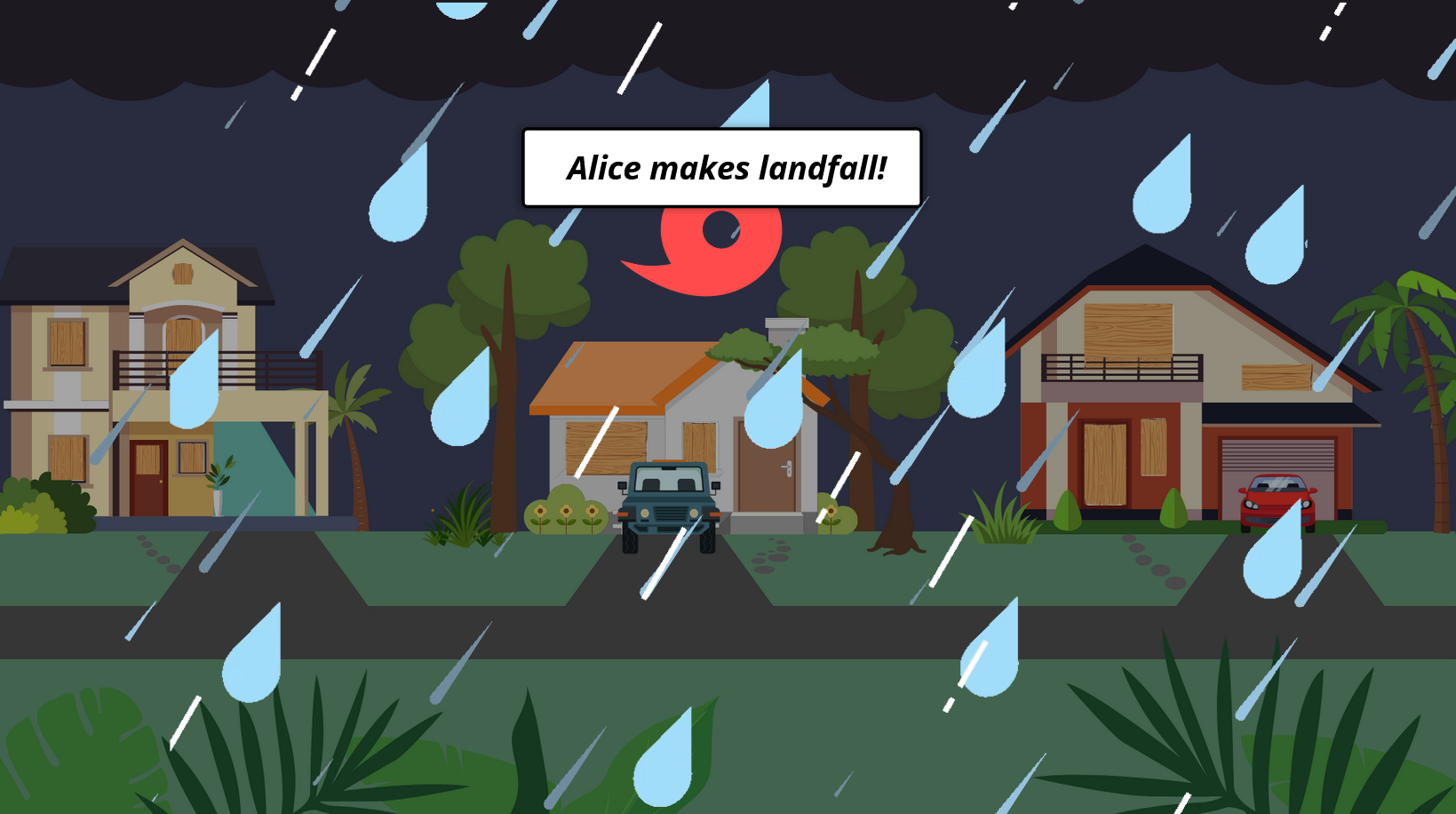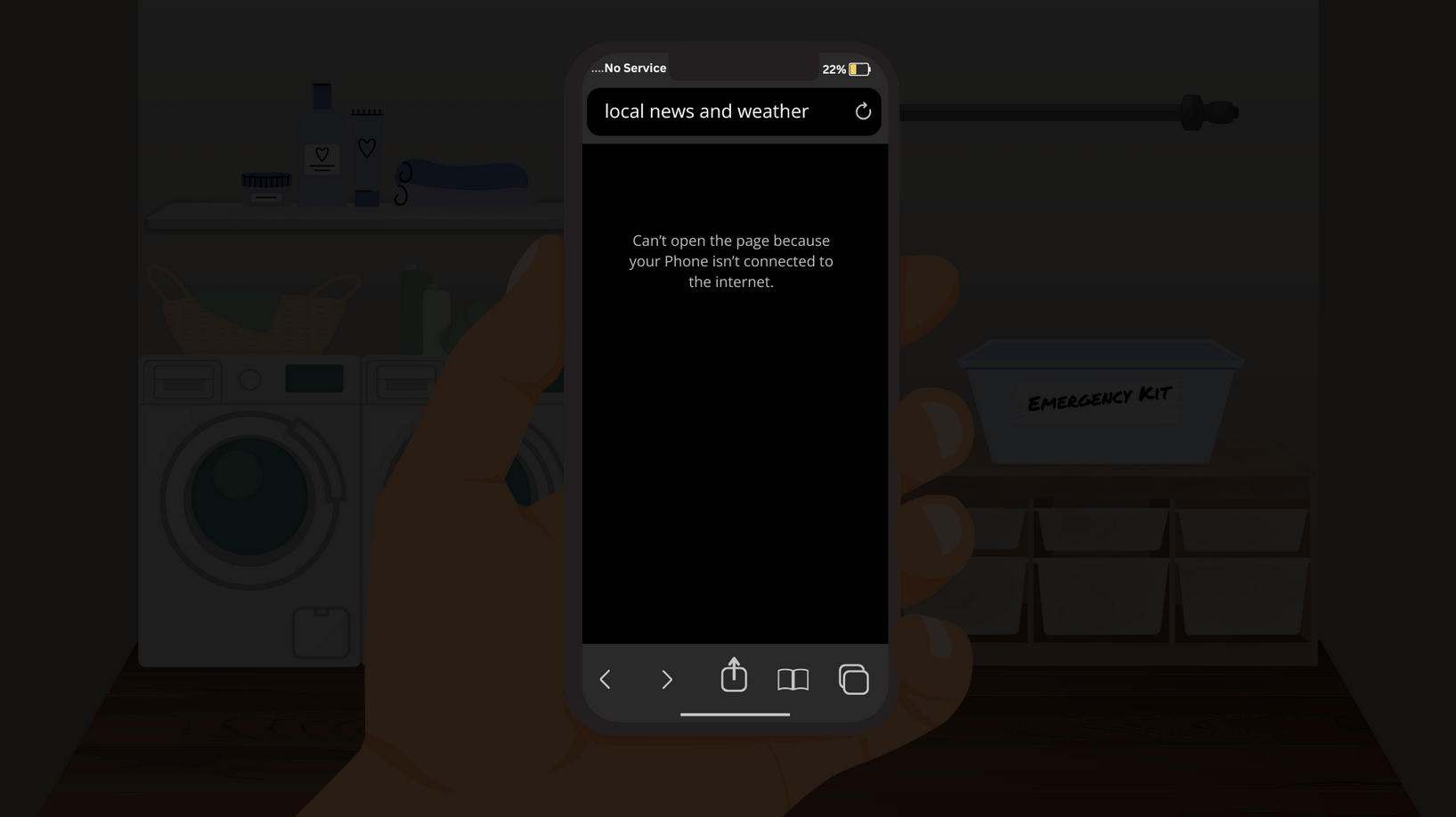
Safe & Sound
Safe & Responsible Medication Disposal
Read description below or
You’re visiting a parent when you notice old medication bottles in the cabinet…
the problem
The last 20 years has seen devastating hurricanes-Katrina, Irma, Helene. Despite the danger, the population of Florida continues to surge. New residents may come for the weather, but can be unaware of just how deadly a hurricane can be. (too general)
the solution
Surviving the Storm is a learning experience that leads learners through a process that teaches hurricane preparation through the story of a new Florida resident, Jeff, as he hurriedly prepares for an oncoming storm.
the process
Surviving the Storm was developed using the ADDIE framework.
Analysis began with conversations with a recent Florida transplant—a family friend—in which the importance of the idea clicked. I then incorporated Cathy Moore’s Action Mapping, my favored framework that focuses on identifying the real-world actions that will best achieve the desired behavioral change. In this case, I asked: What are the real-world actions that will best prepare a new Florida resident for an oncoming hurricane? This gave me a jump-start on identifying and aligning the desired learning outcomes with learning objectives, which are:
hurricane knowledge (categories, watch vs. warning, descriptions of damage severity, etc.)
creating an emergency kit
safeguarding your home & property
finding reliable information
creating an evacuation plan
Design began with another favored tool—backwards design. This ensures activities are focused not only on action, but also on the knowledge behind those actions. After all, knowledge drives action; to many learners, action alone often rings hollow without knowing why they’re doing them. Thus, the content in each module was built to emphasize not only the actions, but the reasons behind them. As the course continues, learners face scenarios that drive home why they went through the trouble of preparing.
Development consisted of creating multimedia assets (in Canva), researching and creating content, and developing interactive elements and scenarios (i.e. drag-and-drop to create an emergency kit, interactive map for the evacuation route, etc.). Also in this phase, I used narrative theory to develop the characters, plot, and make the experience into a compelling story (see more on narrative theory below). As for assessment, I placed periodic quiz questions throughout the experience, reinforcing knowledge, action, and providing feedback to learners.
Implementation consisted of deploying the course (using Netlify), ensuring correct functionality, and sharing it with a focus group of new Florida residents, and others who’ve had to prepare for and experience hurricanes.
Evaluation, the final step, begins with key questions: Did learning take place? How do we know? Has it changed real-world behaviors? In order to find out, I reviewed pre- and post-assessment responses, quiz question answers, and focus group feedback on “Bill’s Hurricane Guide”, the downloadable PDF at the end of the course.
additional theory
Narrative Theory
Jeff’s story closely follows the Hero’s Journey: normal life is disrupted by a “call to action” in the form of an oncoming storm. His neighbor Bill serves as a mentor—an older, wiser figure who has been through the “trials” Jeff is about to face. With Bill’s help, Jeff undertakes certain actions to acquire “new skills”, i.e. preparing an emergency kit, safeguarding his home, etc. In the “climax”, Jeff must use the skills and tools he’s acquired in order to pass through the “final trial”, Hurricane Alice. He emerges victorious, and returns to normal life, but changed.
Another key narrative technique employed in this project is narrative tension. The approaching storm—indicated by narrative updates after 2 and 4 objectives are complete—bring a sense of suspense and urgency that grips the learner and propels them forward.











